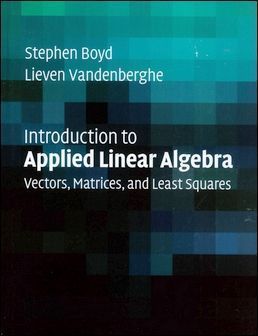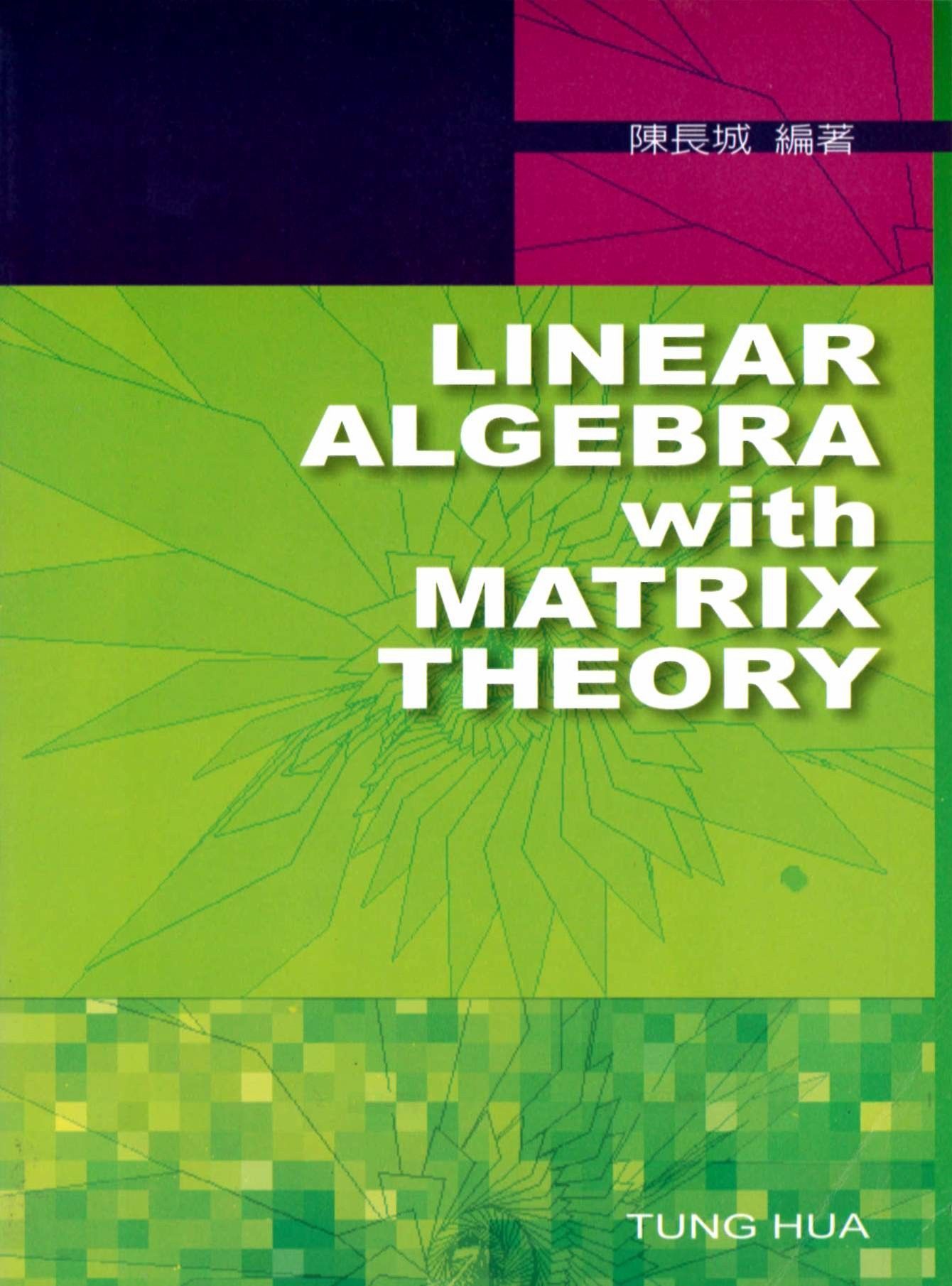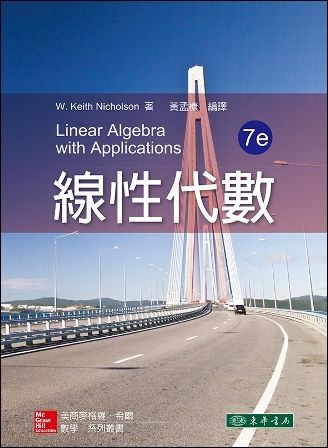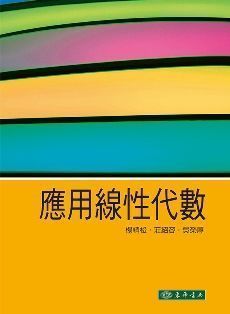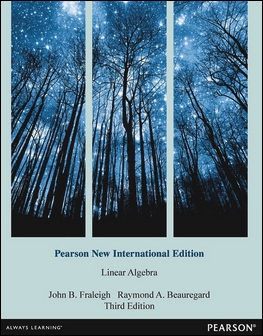書籍分類
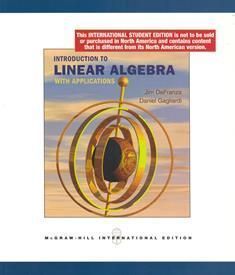
Introduction to Linear Algebra (絕)
作者:Jim DeFranza, Dan Gagliardi
原價:洽詢
ISBN:9789814738101
版次:1
年份:2009
出版商:McGraw-Hill
頁數/規格:488頁/平裝雙色
參考網頁:理工 > 數學/微積分 > 線性代數
版次:1
年份:2009
出版商:McGraw-Hill
頁數/規格:488頁/平裝雙色
參考網頁:理工 > 數學/微積分 > 線性代數
內容介紹 目錄 作者介紹
- Features
- Linear systems, matrix algebra, and determinants: We have given a streamlined, but complete, discussion of solving linear systems, matrix algebra, determinants, and their connection in Chap. 1. Computational techniques are introduced, and a number of theorems are proved. In this way, students can hone their problem-solving skills while beginning to develop a conceptual sense of the fundamental ideas of linear algebra. Determinants are no longer central in linear algebra, and we believe that in a course at this level, only a few lectures should be devoted to the topic. For this reason we have presented all the essentials on determinants, including their connection to linear systems and matrix inverses, in Chap. 1. This choice also enables us to use determinants as a theoretical tool throughout the text whenever the need arises.
- Vectors: Vectors are introduced in Chap. 1, providing students with a familiar structure to work with as they start to explore the properties which are used later to characterize abstract vector spaces.
- Linear independence: We have found that many students have difficulties with linear combinations and the concept of linear independence. These ideas are fundamental to linear algebra and are essential to almost every topic after linear systems. When students fail to grasp them, the full benefits of the course cannot be realized. In Introduction to Linear Algebra with Applications we have devoted Chap. 2 to a careful exposition of linear combinations and linear independence in the context of Euclidean space. This serves several purposes. First, by placing these concepts in a separate chapter their importance in linear algebra is highlighted. Second, an instructor using the text can give exclusive focus to these ideas before applying them to other problems and situations. Third, many of the important ramifications of linear combinations and linear independence are considered in the familiar territory of Euclidean spaces.
- Euclidean spaces: The Euclidean spaces and their algebraic properties are introduced in Chap. 2 and are used as a model for the abstract vectors spaces of Chap. 3. We have found that this approach works well for students with limited exposure to abstraction at this level.
- Geometric representations: Whenever possible, we include figures with geometric representations and interpretations to illuminate the ideas being presented.
- New concepts: New concepts are almost always introduced first through concrete examples. Formal definitions and theorems are then given to describe the situation in general. Additional examples are also provided to further develop the new idea and to explore it in greater depth.
- True/false chapter tests: Each chapter ends with a true/false Chapter Test with approximately 40 questions. These questions are designed to help the student connect concepts and better understand the facts presented in the chapter.
- Rigor and intuition: The approach we have taken attempts to strike a balance between presenting a rigorous development of linear algebra and building intuition. For example, we have chosen to omit the proofs for theorems that are not especially enlightening or that contain excessive computations. When a proof is not present, we include a motivating discussion describing the importance and use of the result and, if possible, the idea behind a proof.
- Abstract vector spaces: We have positioned abstract vector spaces as a central topic within Introduction to Linear Algebra with Applications by placing their introduction as early as possible in Chap. 3. We do this to ensure that abstract vector spaces receive the appropriate emphasis. In a typical undergraduate mathematics curriculum, a course on linear algebra is the first time that students are exposed to this level of abstraction. However, Euclidean spaces still play a central role in our approach because of their familiarity and since they are so widely used. At the end of this chapter, we include a section on differential equations which underscores the need for the abstract theory of vector spaces.
- Section fact summaries: Each section ends with a summary of the important facts and techniques established in the section. They are written, whenever possible, using nontechnical language and mostly without notation. These summaries are not meant to give a recapitulation of the details and formulas of the section; rather they are designed to give an overview of the main ideas of the section. Our intention is to help students to make connections between the concepts of the section as they survey the topic from a greater vantage point.



